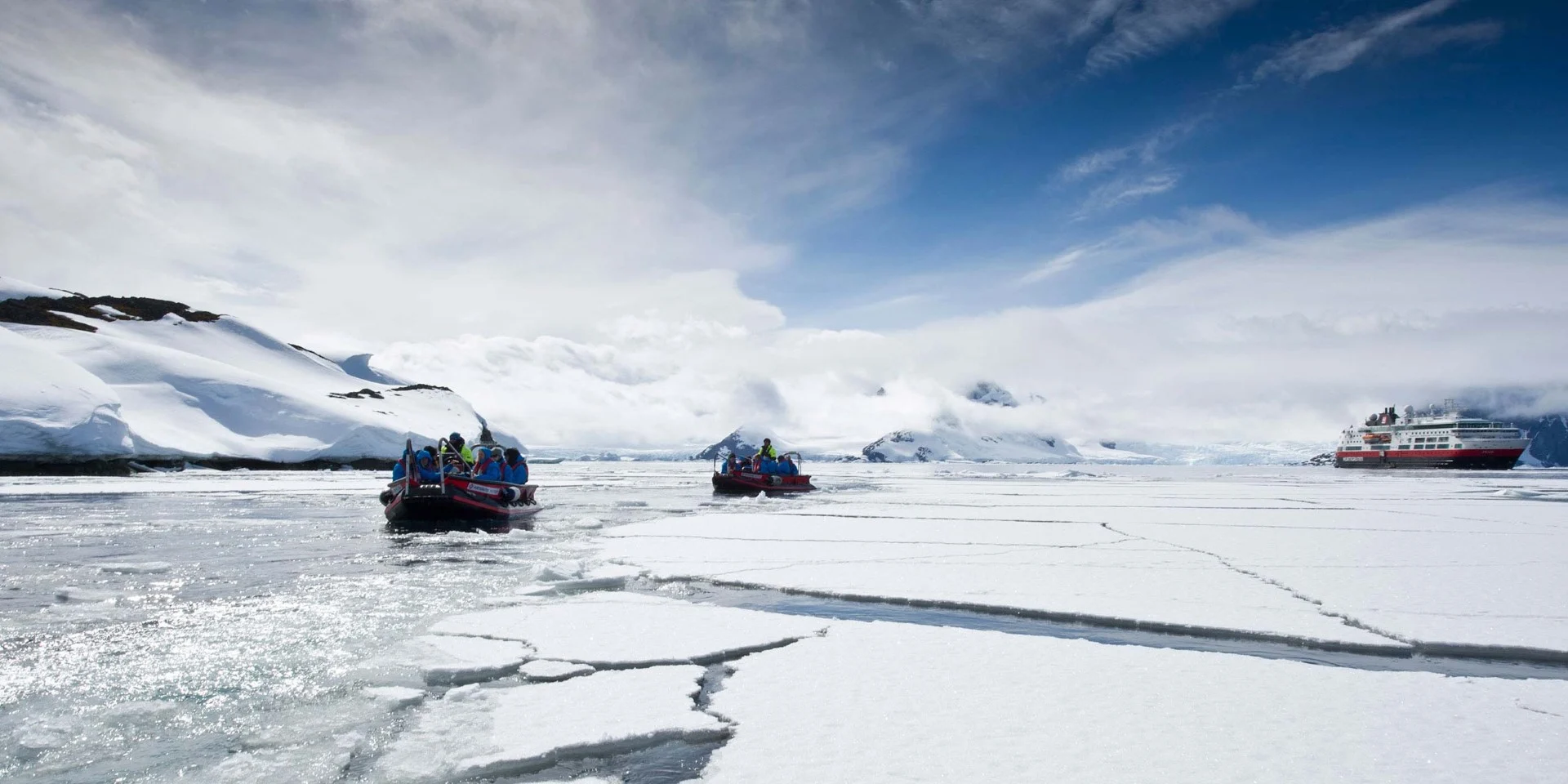Antarctica Reading List
Antarctica Reading List Here's a reading list to give you an idea of what you can expect from your trip to the world's most remote location.
3 mins read
Antarctic travel is an experience unlike any other. This continent has no indigenous population, and very few people have even visited. Although this sends a shiver of excitement through the most adventurous out there, it can be a daunting prospect for some. After all, it's hard to get a handle on what your trip will be like when it's so rare to have experienced the continent at all. Here's a reading list to give you an idea of what you can expect from your trip to the world's most remote location:
'Antarctica: An Intimate Portrait of a Mysterious Continent' by Gabrielle Walker
Dr. Gabrielle Walker's portrait of Antarctica is your go-to source for a scientific perspective on what it's like to be in Antarctica. Walker is a climate-change expert and, according to her website, a self-proclaimed "ice addict." It's no wonder, then, she has been drawn to studying the poles and how they signify the world's changing temperatures. This book gives you a first-hand account of the kind of science experiments that are being done at the poles, as well as the experience of spending time in this remote part of the world. Read more.
'Endurance: Shackleton's Incredible Voyage' by Alfred Lansing
In 1914, Ernest Shackleton and a crew of trained sailors planned an incredible voyage across the Antarctic continent. Things didn't go as planned - before they even reached their destination, their ship, the "Endurance," was frozen in pack ice. The shifting, thawing and refreezing of the waters eventually led to the ship's destruction, and Shackleton and his men were left stranded on the ice surrounding Antarctic. They were in dire straights but, against all odds, they survived. Alfred Lansing's book uses in-depth research into the journals kept by Shackleton and the crew to create an intimate account of the journey. Read more.
'The Last Place on Earth' by Roland Huntford
There was a race in the early 20th century between Robert Scott and Roald Amundsen. This book explores the histories of both of these men and their attempts - successful and unsuccessful - to reach the South Pole. Robert Scott and his men didn't succeed and died in the attempt and are now heroes in British history. Alternatively, Amundsen and his fellow Norwegian companions were the first people to ever stand at earth's south-most point, but have been mostly forgotten. Huntford's book expands on these two men and what contributed to their respective places in history. Read more.
'The Birthday Boys' by Beryl Bainbridge
If you're not one for non-fiction, "The Birthday Boys" will give you a fictionalized glimpse into Antarctic history. In this novel, Bainbridge paints a picture of what Robert Scott and his companions' attempt to reach the pole might have looked like. Although this isn't your source for hard facts, it is a gripping tale of ambition, bravery and curiosity felt by the men who departed on this doomed voyage. Read more.
'Terra Incognita: Travels in Antarctica' by Sara Wheeler
If Gabrielle Walker's "Intimate Portrait" is a scientific view of life on Antarctica, "Terra Incognita" is the traveler's perspective. Sara Wheeler is a travel writer and journalist who used this book to document her seven-month stay on the contentment. The book captures the spirit of wanting to explore the unknown - a feeling certainly shared by anyone drawn to going on a similar journey. As you prepare for your voyage, this book will give you a glimpse at the experience to come. Read more.
If you're not already considering a trip to Antarctica, read these books anyway. The tales of intrepid explorers and vast, untouched destinations might spark a longing for adventure you didn't know you had.
